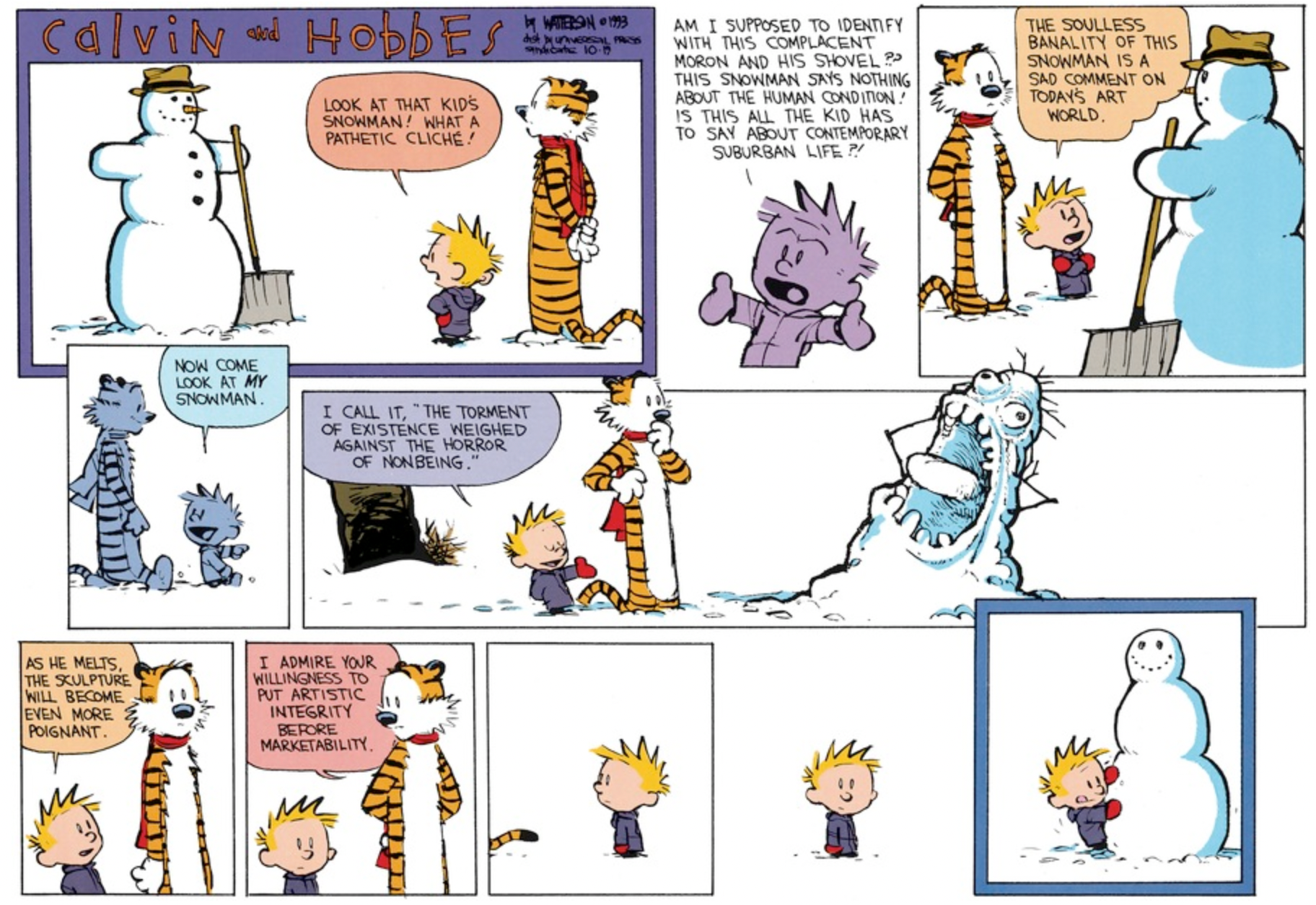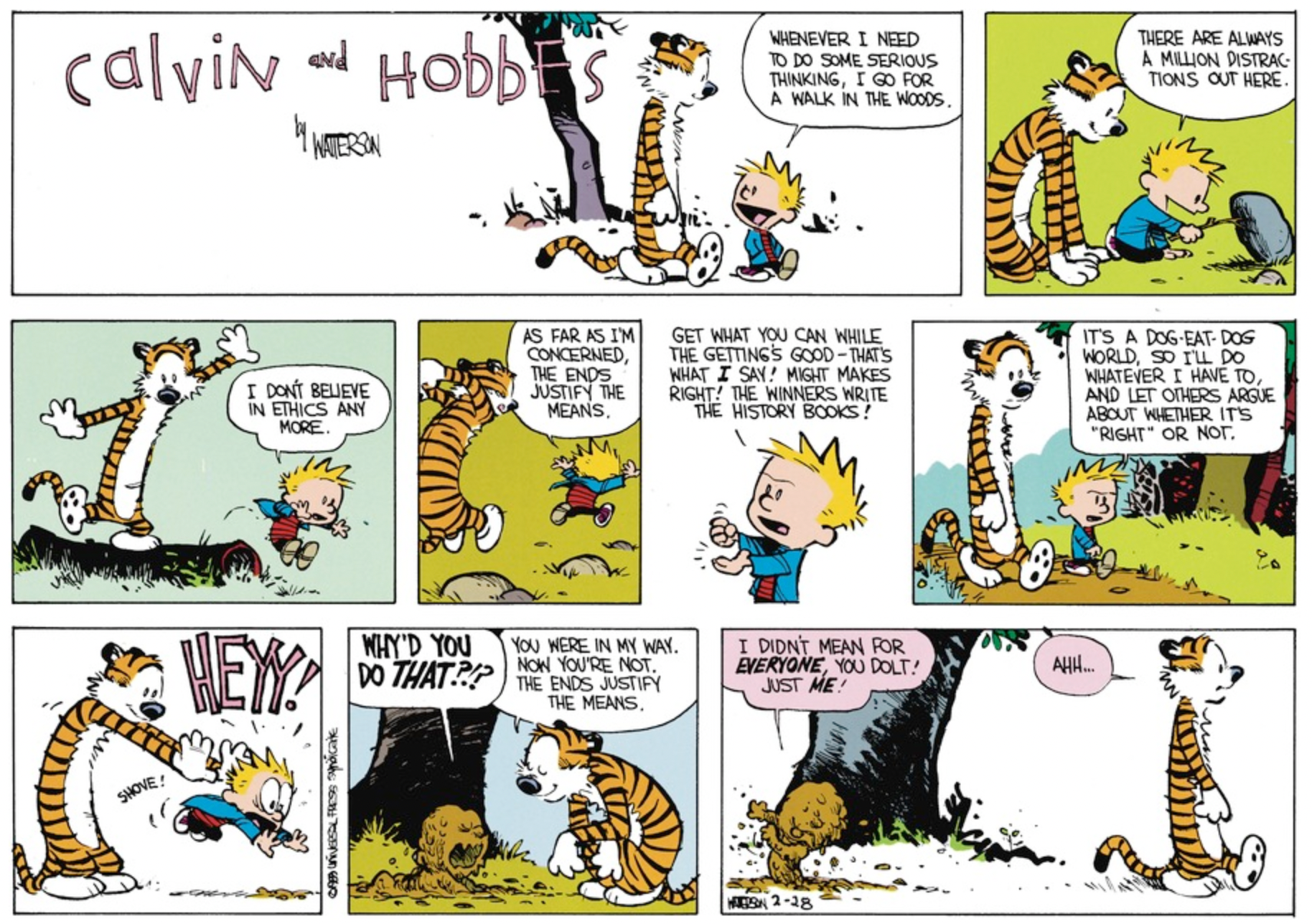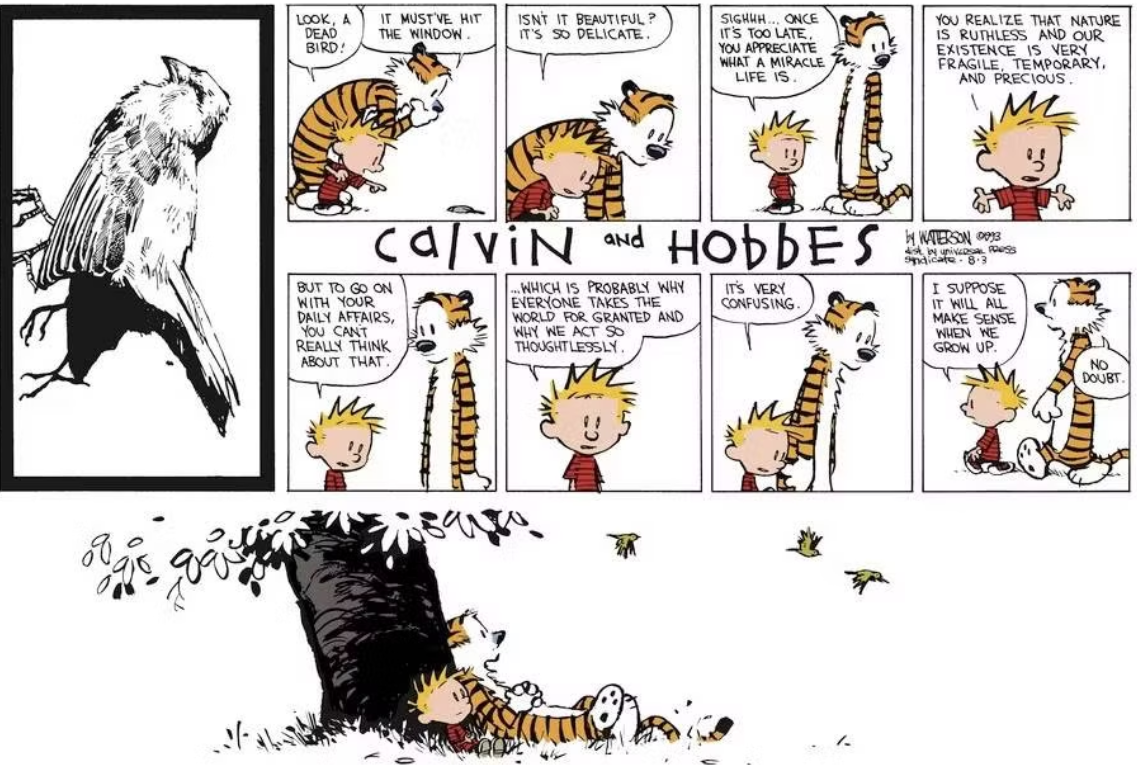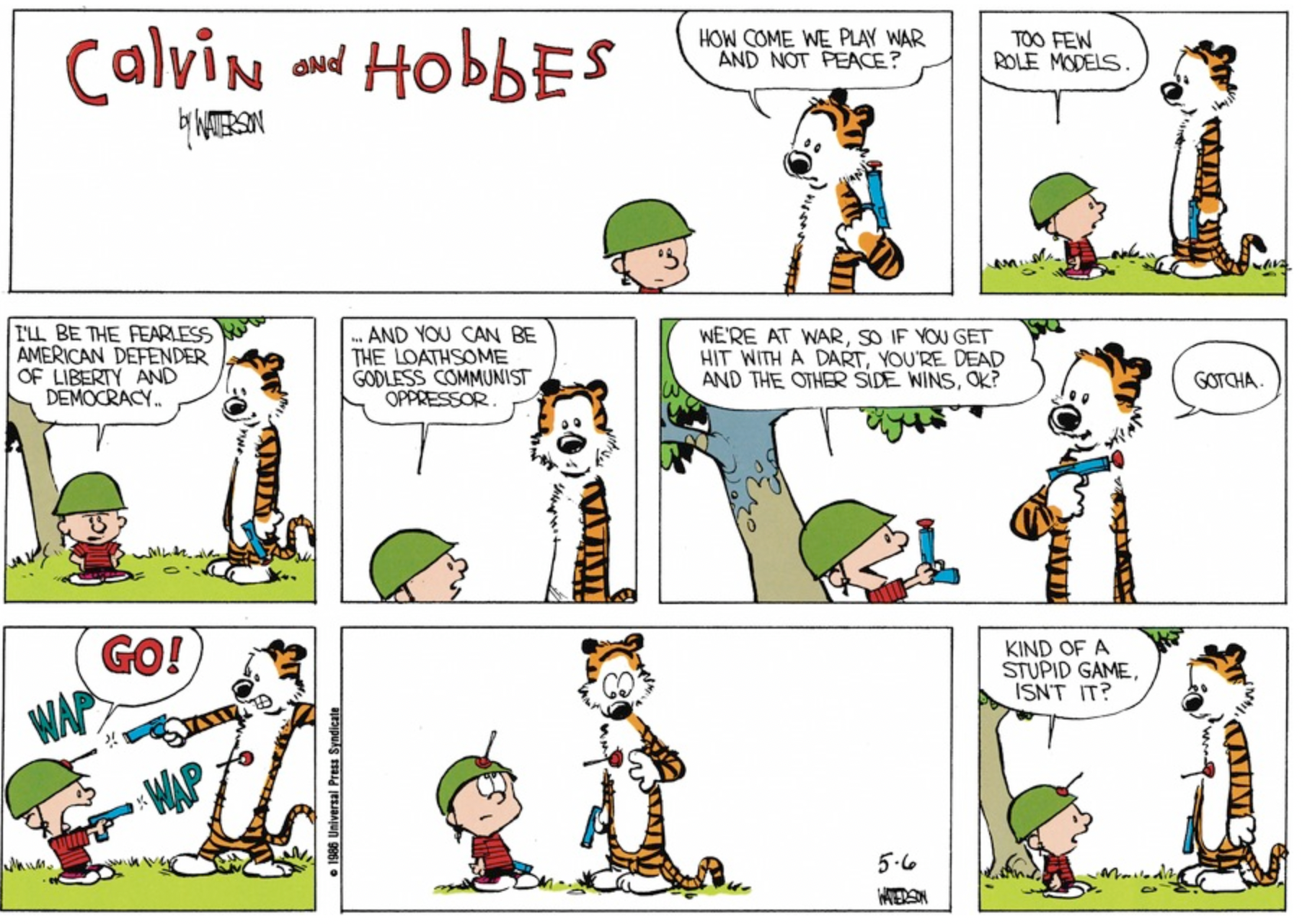
Much of Calvin and Hobbes‘ allure is in its ability to relate to its audience. Nearly every reader can remember being a chaotic six-year-old, straining to enjoy life to its fullest. That includes imaginary friends, creative adventures, and fun days spent playing with toys or watching TV on Saturdays. Calvin represents a typical child, making absurd mistakes because he wants nothing more than to have fun.
Yet, beyond the surface-level appearance of a child-centered strip, Bill Watterson’s most recognizable work is far deeper. Rather than just sharing the ridiculous adventures of that little boy, he worked in a much deeper and more intelligent element. In the smartest strips, Calvin and Hobbes is extremely deep and practically impossible for younger readers to understand.
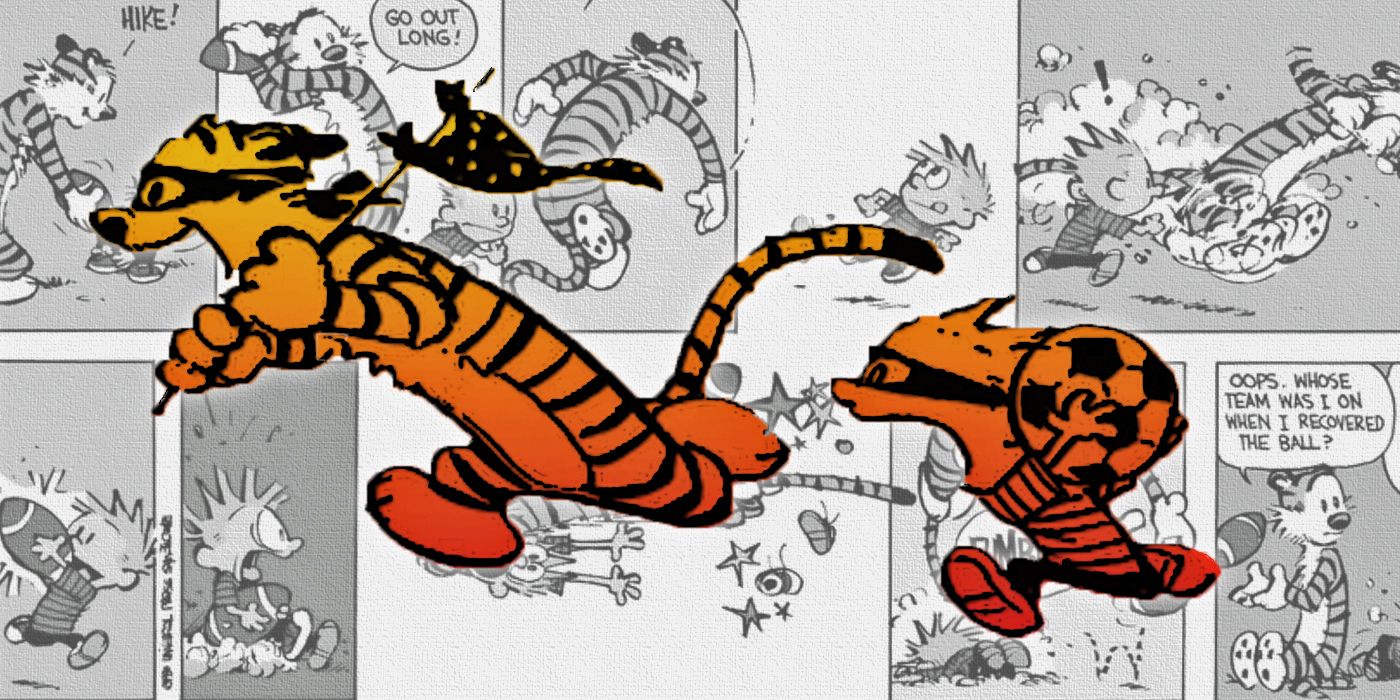
Related
10 Best Calvin and Hobbes Comics About Sports
Calvin and Hobbes may not participate in the Olympics as much as everyone else, but they certainly have their own sports hobbies, such as Calvinball.
10 Calvin and Hobbes Argue Over Marketability
Published on December 5, 1993
Calvin and Hobbes often make snowmen, but they are typically little more than gritty versions of the classic. Rather than just stacking three spheres of snow, Calvin creates grotesque creatures who butcher each other, hunt innocents, and even protest his dad. The December 5, 1993, strip turned those garish displays into legitimate artistic displays.
In it, Watterson critiqued the need to create marketable art to receive the supposed legitimacy of mass consumption. Despite genuinely creating an insightful and philosophical snowman, Calvin is forced to instead create a boring and traditional snowman. This stunning social critique made the strip both memorable and insightful.
9 Calvin and Hobbes Discuss Death
Published on April 16, 1991
Everyone will struggle with death. Whether a reader is six years old or sixty, they will eventually encounter death and be forced to reckon with its influence. In the April 16, 1991 strip, Calvin and Hobbes discuss the sidewalk as a metaphor for life. The two are left contemplating for an entire day.
Have we made the most of these precious few footsteps?
Whereas most other strips might have ended with the duo contemplating those questions, Calvin and Hobbes takes it a step further. While it is open to interpretation, that is one element that makes it so stunning. It implies through the final panel that, through obsessing over life’s futility and fleeting nature, a person can never actually escape their own mind. It made a lasting impression and proved Watterson’s intelligence. Few other creators would have even contemplated such a unique metaphor, let alone depicted it so effectively.
8 Calvin Discovers His Insignificance
Published on October 14, 1993
Few strips have ever been more insightful than the seemingly insignificant October 14, 1993 strip. Half of it involves Calvin staring aimlessly at the stars, saying nothing and doing nothing of importance. The entire message comes from a simple phrase at the end, wherein Calvin realizes just how utterly unimportant human life is.
His shout represents one of Calvin and Hobbes‘ best quotes because it sums up an entire philosophical outlook in just six words. Without the need for an exhausting speech or a complicated metaphor, Calvin communicates to young and old readers that life is unimportant to the universe. The nihilistic outlook is painful, but it is done incredibly well.
7 Hobbes Ruins Calvin’s Philosophy
Published on April 9, 1989
The dog-eat-dog world is a fairly common concept that permeates throughout the media. With so many action-adventure movies, heroes need someone to pit themselves against, which often means waging war with impunity. Characters look after themselves and their families with little regard for others. Rather than accepting that narrative, Watterson eviscerated it with just seven panels.
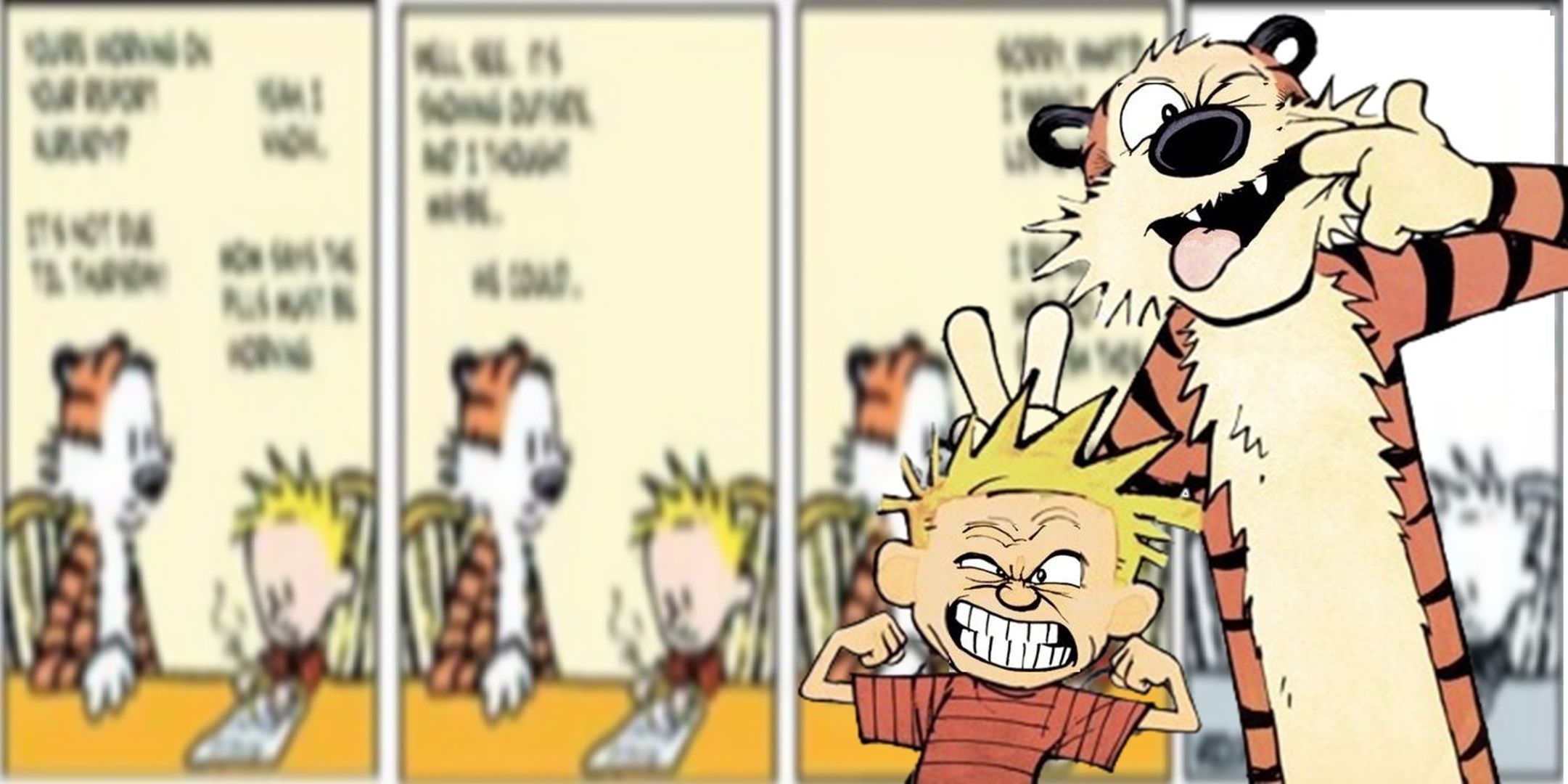
Related
Did a Fake Calvin and Hobbes Comic Strip Sell For Over $14,000?
In the latest Comic Book Legends Revealed, see how a fake Calvin and Hobbes comic strip sold for over $14,000!
After Calvin proudly declares that he will ignore ethics and look out for himself only, Hobbes pushes him into the mud to contradict his dog-eat-dog narrative. When Calvin complains, Hobbes identifies that his stance truly covers for a deep-seated selfishness. It is an incredibly smart way to depict Calvin’s obnoxious outlook without becoming overly preachy.
6 Calvin Defends the Value of Comic Books
Published on July 22, 1992
Throughout Calvin and Hobbes, strip creator Bill Watterson desperately worked to establish comic strips as a valuable medium. He always believed that no form of art should be considered high or low because they all hold inherent value. His stance is why so many of these strips are so outright intelligent.
Yet Watterson was never opposed to poking fun at his own beliefs. He accurately pointed out the flaw in his argument — that many cartoonists never bother to grow beyond fan service and low forms of humor. All the while, he still managed to communicate his argument for what books should be. It’s a smart way to explore all sides of an argument in a limited space.
5 Tracer Bullet Was an Excellent Critique
Published on February 25, 1991
Calvin and Hobbes often parodied other genres, including science-fiction, superheroes, and fantasy stories. The noir genre did not escape Watterson’s notice. In 1991, he introduced Tracer Bullet, the strip’s parody of slick noir detectives. Though it initially appeared to be just another parody, it proved his most brilliant.
After all, I’m not an opera critic. I’m a private eye.
Through Tracer Bullet, Watterson writes some of his most poignant monologues. He manages to lean into purple prose without making it irritating. Instead, the absurd subject matter for each of Tracer’s rants makes him memorable. The writing itself is downright brilliant. In the February 25, 1991 strip, his comparison between money, music, and private eyes is incredible. It’s hard to imagine a smarter parody.
4 Calvin Explores Different Perspectives
Published on June 17, 1990
The June 17, 1990 strip is easily remembered as one of Calvin and Hobbes‘ best-drawn issues. It features Watterson at his most artistic, depicting neo-cubist styles and a genuinely fascinating first two panels for this Sunday issue. It features the shattering of reality and the horror of discovering that the world has changed completely.
It would have been enjoyable enough if the message remained with the simple discovery that the world had a new art style. Instead, Watterson managed to weave a genuine message into his work. Calvin realizes that the world has different perspectives and then rejects it outright, simply to dismiss his father’s argument. It’s a fun way to explore Calvin’s point of view and the reasons behind his stubbornness.
3 Calvin Mourns a Dead Bird
Published on September 19, 1993
Other strips showcase their intelligence through big words, subversive concepts, and philosophy. The September 19, 1993 strip, instead, questions the actual meaning of adulthood. After finding a dead bird, Calvin and Hobbes once again consider the miracle of life. In the penultimate panel, Calvin expresses that he expects to understand everything as he ages. The pair then sit under a tree and ponder.
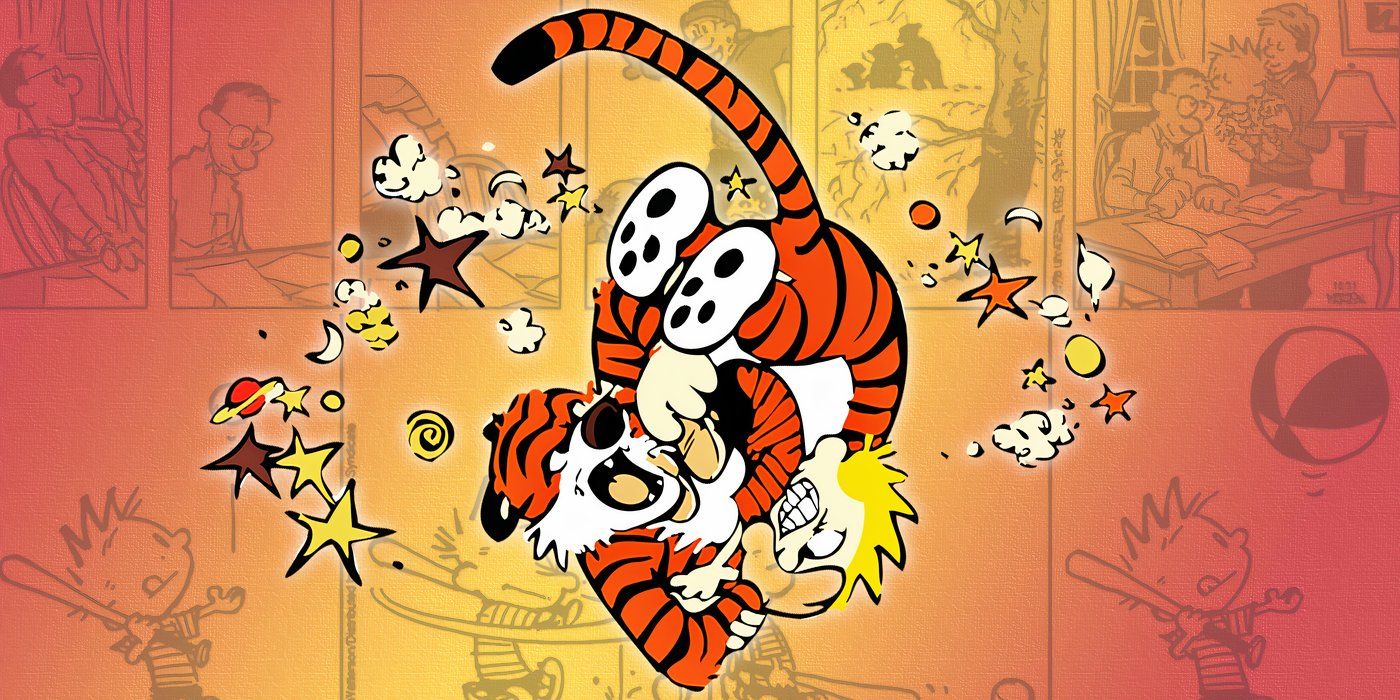
Related
10 Best Calvin and Hobbes Strips Without Words
Not every four-panel comic strip is going to use words in every strip, and Calvin and Hobbes has quite a few speechless comics that are excellent.
Older readers can appreciate that the world is still confusing when children grow up. Death is still difficult to comprehend because finality itself is hard to fathom. Adults do not understand the world the way that kids expect to. Sometimes, the brutal truth is what this strip implies: Some things cannot be comprehended. Ironically, understanding that is what makes this strip so smart and so effective.
2 Calvin Mocks Susie’s Intelligence
Published on March 25, 1995
Intelligence is often defined as measuring someone’s ability to know about the world around them. Yet, even as the question of different types of intelligence was still brewing, Watterson managed to depict it easily in a way that even children could understand.
While Susie views intelligence as something that has to be worked for, Calvin views it as inherent. After Calvin discovers Susie’s diligence, he realizes she is not as smart as he thought. This exploration of two types of intelligence is portrayed remarkably simply. Watterson’s understanding of intelligence is, in itself, smart.
1 Calvin Discovers the Futility of War
Published on June 23, 1991
Pacifism is often portrayed as a more intelligent option than war. After all, it would feature fewer deaths and far less destruction. Regardless of a reader’s perspective on war, it is hard to deny that Watterson portrays the argument for pacifism well. With just eight panels, he gives multiple reasons for countries to stray from war.
Kind of a stupid game, isn’t it?
Watterson showcases the impact of propaganda, the lack of role models, and the mutually assured destruction that leads to—and comes from—war. Calvin and Hobbes both shoot each other immediately and recognize that no one truly wins when shots are fired. The best war-focused comics often consider war a brutal and pointless fight, and Calvin and Hobbes‘ intelligent way of depicting war is no different.

Calvin and Hobbes
From 1985 to 1995, Calvin & Hobbes had a legendary run in newspaper comics. Almost 30 years later, Bill Watterson’s strip about an imaginative, chaotic child and his stuffed tiger is still one of America’s most popular comic strips. Known for its versatile art style, sense of whimsy and imagination, and realistic characters, Calvin & Hobbes is easily one of the funniest and smartest 20th Century comics.
- Writer
- Bill Watterson
- Publisher
- Andrews McMeel Publishing
- Artist
- Bill Watterson
Discover more from reviewer4you.com
Subscribe to get the latest posts to your email.
